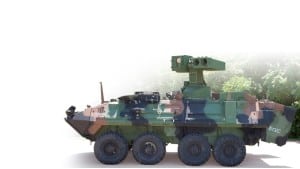
MCKINNEY, Texas – The recent $30 million contract Raytheon [RTN] won to upgrade missile launchers on 20 Marine Corps Light Amphibious Vehicles (LAV) fills out the service’s program of record for 102 vehicles with the exception of four test articles.It also firmly establishes Raytheon as a so-called “lethality integrator,” a position the company sees advantageous as cash-strapped militaries seek to integrate legacy weapons and vehicles to provide new capabilities.Having proven its ability to integrate existing weapon systems onto existing vehicles…

 By
By 











